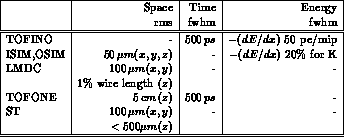
Table 1: Space, time and energy resolutions of the FINUDA subdetectors
The characterization and testing of the FINUDA subdetectors described so far show how the design momentum resolution - the most crucial feature of the detector - is met with a safety margin. To demonstrate the resolving power in hypernuclear spectroscopy, a full simulation was carried out assuming the resolutions in {tab.1, all vastly met as shown by test beam results.

Table 1: Space, time and energy resolutions of the FINUDA subdetectors
Production of a hypernuclear states producing a 270 MeV/c prompt  was simulated, the prompt pion tracked through
the spectrometer, hits simulated in the detectors, tracks reconstructed by
matching hits and fitting of trajectories. The reconstructed raw momentum
distribution (fig.5a) shows a
shoulder at low energy due to pions
crossing the interaction/target region after being emitted, whose momentum is
degraded by the material crossed. When selecting only the 'forward' pions
(fig.5b), i.e., those not crossing back the interaction/target
region, the momentum resolution is of the order 0.3% fwhm.
However,
the momentum resolution for forward prompt pions can be further increased by
exploiting the vertex measurement by the ISIM and OSIM, and correcting their
momentum by the thickness of target crossed. This is shown in fig.5c,
where the mean of the distribution is now set to the 270 MeV/c
generated momentum, and the width of the reconstructed spectrum
is reduced to 0.25%.
was simulated, the prompt pion tracked through
the spectrometer, hits simulated in the detectors, tracks reconstructed by
matching hits and fitting of trajectories. The reconstructed raw momentum
distribution (fig.5a) shows a
shoulder at low energy due to pions
crossing the interaction/target region after being emitted, whose momentum is
degraded by the material crossed. When selecting only the 'forward' pions
(fig.5b), i.e., those not crossing back the interaction/target
region, the momentum resolution is of the order 0.3% fwhm.
However,
the momentum resolution for forward prompt pions can be further increased by
exploiting the vertex measurement by the ISIM and OSIM, and correcting their
momentum by the thickness of target crossed. This is shown in fig.5c,
where the mean of the distribution is now set to the 270 MeV/c
generated momentum, and the width of the reconstructed spectrum
is reduced to 0.25%.